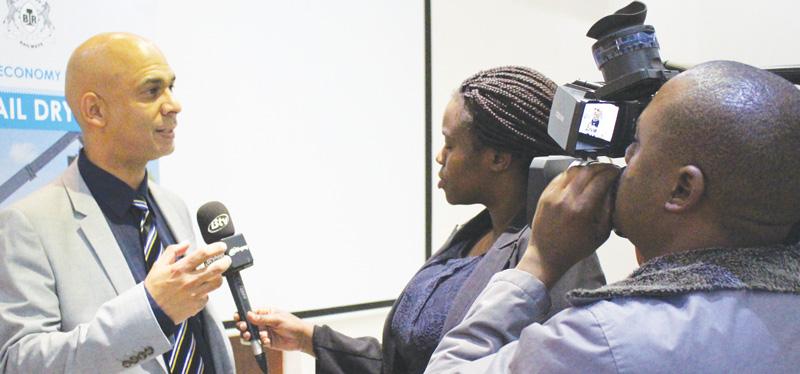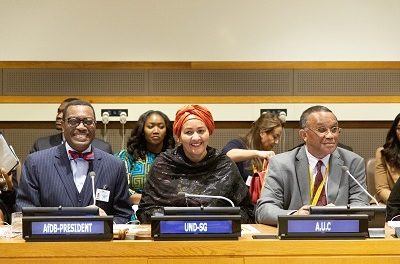
Development Bank celebrates 15th anniversary – from a one-man show to a development finance anchor

Marking the fifteenth anniversary of the Development Bank of Namibia, its Chief Executive, Martin Inkumbi, said the bank was capitalised by its shareholder the Ministry of Finance, but that its primary source of growth has been its ability to attract further capital on the back of government’s equity capital contribution.
Prior to its founding, the Bank adopted a commercial model in which repayment of loans and interest, is primarily reallocated to additional lending, with a portion set aside for prudent reserves. In addition to subsequent tranches from its shareholder, the commercial approach to lending has had a significant multiplier effect on the bank’s ability to finance additional projects.
To date, the bank’s loan book, its major asset, stands at N$8.8 billion.
Explaining the institution’s role in development financing, Inkumbi said it extends beyond lending and it has had a catalytic effect on forms of finance, for instance contract financing which enables the bank to support contractors who are successful in bidding for large tender but do not have sufficient funds to bankroll such projects.
Renewable energy is another industry where the Development Bank has made great strides. In order to enable privately owned utilities to participate in electricity generation, regulatory change had to be paired with a suitable financing model. In addition to photovoltaic plants, the bank has also financed the Ombepo wind farm, another first in Namibia.
Finally, he highlights the bank’s apex finance which provides capital to on-lenders. Although the bank is noted for providing capital to two local commercial banks and the Namibia Procurement Fund in the past for SME finance, what is not well known is that it provides apex microfinance for entities which on-lend small amounts for business activities with beneficial development impacts. An example is the bank support to Postfin, the lending arm of Nampost Savings Bank.
The Development Bank was also the first financial institution to implement an environmental and social management (ESM) system. The ESM unit monitors all projects financed by the bank for compliance with local environmental, labour and social legislation and regulations. The ESM unit also vets applications to ensure that potential lending will not have negative environmental and / or social impacts.
Furthermore, based on its advanced risk management model, the bank is able to assess risk ahead of investment, making it possible to finance projects of which the risk profile is unacceptable to commercial lenders. This underscores the vital point that the Development Bank is not in competition with commercial banks, instead serving as a complementary financier, and in some cases, as a proxy for direct finance, creating a channel that opens up financing opportunities for commercial lenders
He also said that the bank is developing a credit guarantee scheme which will be made available to commercial sources of finance, such as banks, to reduce the risk of financing SMEs with sound business plans and cash flow projections, but with lower levels of collateral. The assurance scheme will enable banks to finance a greater number of SMEs.












































